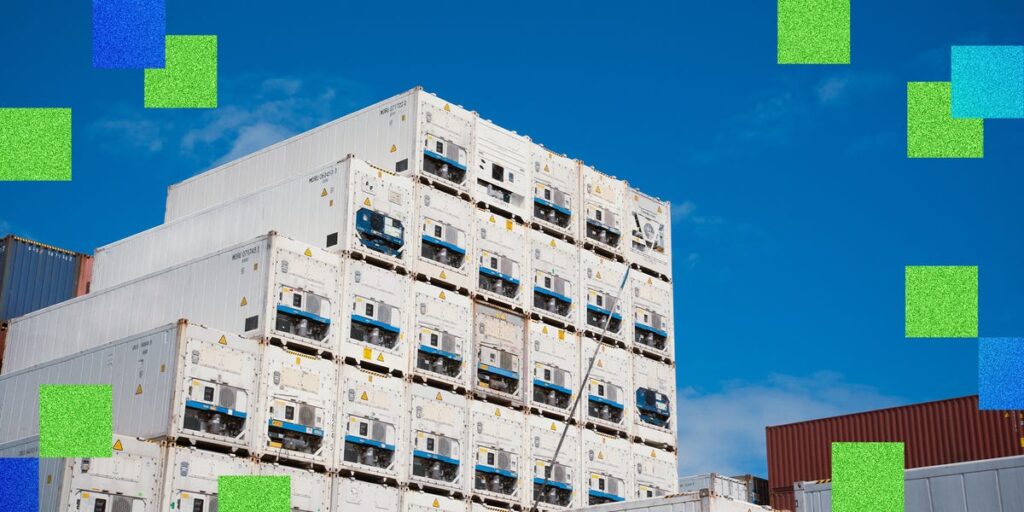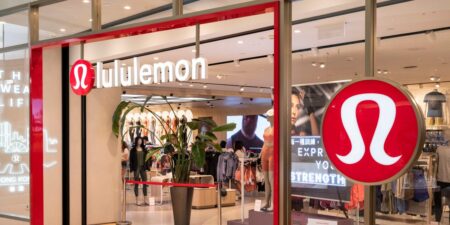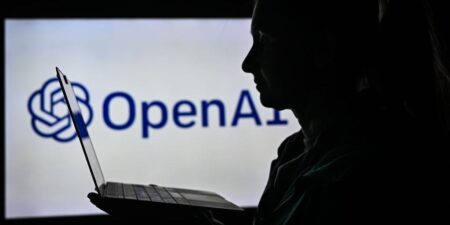When a shipment of refrigerated or frozen goods arrives at a Lineage Logistics warehouse, machines spring into action. Computer-vision technology scans pallets and logs data on customers, product types, and item descriptions. AI-driven algorithms combine shipment data with historical information to predict when a truck will take the goods out of the warehouse. The technology assigns pallets a spot in the warehouse based on how long they’ll remain in the facility and directs the forklift operator where to go.
This level of technology can improve efficiency in any type of supply chain, but it’s critical in cold warehouses, where goods like frozen foods, fresh produce, and pharmaceuticals are stored. A brief deviation in temperature has the potential to damage a shipment, and warehouse managers don’t want workers spending hours without breaks in sub-zero conditions. This makes accuracy and productivity imperative in the cold chain.
Refrigeration and temperature-sensor technology have been integral to cold chains for decades, but advanced versions are now permeating the industry. Cold-chain providers are ditching manual processes for AI-driven algorithms and exploring digital twins and AI agents to make highly automated operations even more autonomous.
“Whether it’s a 50-year-old technology, or whether it’s a cutting-edge AI, technology is very pervasive in the cold chain,” Sudarsan Thattai, the chief information officer and chief transformation officer at Lineage Logistics, told Business Insider.
The cold chain warms up to predictive AI
One way Lineage uses AI is with decision algorithms. When a poultry shipment from Lineage customer Tyson Foods arrives at a warehouse, algorithms determine where to place products to minimize walking or driving distance in the warehouse.
A whole turkey likely won’t be on store shelves until November, but deli meat is transported and sold year-round. The algorithms could direct forklift operators to place whole turkeys on a high shelf in the back of the warehouse, while keeping sliced turkey for sandwiches close to the front.
“It cuts down on the miles that I need to drive to pick that pallet and put it away,” Thattai said. “You don’t want to bury the deli meat because now you’re going to expend extra energy digging out.”
Cold-chain provider Americold sees a “strong interest in innovation across all cold chain sectors,” said Rob Chambers, the company’s president. Pharmaceuticals, fresh produce, and specialty foods often lead the way in tech adoption because of regulations and temperature sensitivities that require a highly controlled and actively monitored supply chain.
Chambers said customers aren’t necessarily asking Americold for AI by name, but they do expect “outcomes that AI can help deliver,” like fewer stockouts and the ability to quickly react in real time to any changes. The cold-chain company has invested in predictive analytics to better understand customer demand and changes in how food flows through the supply chain. That way, Americold can proactively plan its warehousing capacity, Chambers said.
Unilever, which owns ice cream brands such as Magnum and Ben & Jerry’s, also uses AI for prediction. The consumer goods company operates a cold chain that spans 60 countries, 35 production lines, and 3 million ice cream freezer cabinets. Unilever’s supply chain team analyzes weather inputs with AI, which allows them to forecast how much ice cream consumers might buy in specific regions. If a heat wave is coming, ice cream demand might soar, and the AI-based inventory systems could suggest decisions on how to allocate stock. The AI tools improved forecast accuracy by 10% in Sweden, as per a January report from Unilever. In the US, sales went up 12%.
The predictions not only guide inventory strategy, but they also help managers determine the number of trucks needed and the optimal way to route them to and from warehouses, said Ron Leibman, the chair of McCarter & English’s transportation, logistics, and supply chain management practice.
“A lot of this stuff has been done for a long time. It’s just, AI does it differently, faster, and probably better,” Leibman said.
The cold chain’s data-sharing black hole
Americold and Lineage see potential for AI to expand in the cold chain.
Americold is exploring digital twins, which create a virtual duplicate of a warehouse used for simulating and planning. It’s also looking into AI-guided robots that pick products in cold environments.
In temperature monitoring, the technology is already going beyond recording temperatures to sending alerts when temperatures go out of range, Thattai said. Large language models could be trained on temperature excursions, making it easier and cheaper to deploy AI and detect changes.
Thattai foresees AI agents automatically adjusting warehouse appointment times based on a truck’s real-time location data, rather than using estimates or phone calls. Thattai jokes that if he calls a truck driver to ask for their location, no matter what, they’ll say they’re 10 minutes out.
One shortfall, however, is visibility and data-sharing across the cold chain. Thattai said it has progressed, but it’s not ubiquitous.
“Data sharing is one big area which is a black hole,” he said.
Not all businesses share their real-time data, Thattai said. Independent or small trucking fleets may not use as much technology as large trucking companies. Produce growers are “not highly sophisticated,” Leibman said. They often work with manual documents listing the types and quantities of fruits and vegetables to pick.
These types of manual processes don’t lend themselves to data sharing in the cold chain. Without data, AI lacks a basis for making predictions.
“We’re not really at the point of utilizing artificial intelligence to its max,” Leibman said.
Read the full article here
















